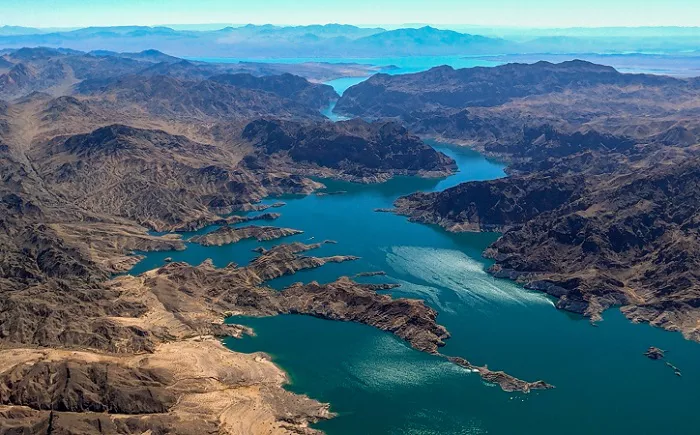Lake Mead, the nation’s largest reservoir, is experiencing critically low water levels, prompting the National Park Service (NPS) to implement proactive measures aimed at maintaining recreational access for the public. The reservoir, which straddles the Arizona-Nevada border and serves as a popular destination for boating enthusiasts, is currently at its third-lowest elevation in a decade, according to the U.S. Bureau of Reclamation.
The reservoir’s declining levels are closely tied to an ongoing snow drought across the Southwest. Snowmelt from the Rocky Mountains and surrounding Colorado Plateau typically replenishes the Colorado River system, which feeds Lake Mead. However, the National Oceanic and Atmospheric Administration (NOAA) reports that the region is enduring an “exceptional snow drought,” with snowpack in February measuring just 23% of the historic median—the lowest recorded since 1987.
As of the end of May, Lake Mead’s elevation stood at 1,057 feet above sea level, dropping five feet since April and nine feet since March. Despite the decrease, the lake remains open to visitors. “While that’s lower than historical averages, the park is fully open, and we’re ensuring that recreational access remains available across the lake,” said Maxwell Dotson, spokesperson for the Lake Mead National Recreation Area, in a statement to SFGATE.
To support ongoing access, the NPS is advancing its Sustainable Low Water Access Plan, launched in 2023. The initiative includes the modification of key boating facilities—such as those at Callville Bay, Echo Bay, South Cove, and Temple Bar—down to an elevation of 950 feet. These updates are designed to keep ramps operational through at least 2026, even under extended drought conditions. Approximately 20% of last year’s 6.4 million visitors utilized these boat ramps and marinas.
One of the most critical components of the plan involves extending the Hemenway Harbor ramp, the lake’s most heavily used launch site. Although current projections suggest Lake Mead will remain above 1,050 feet through 2025, the NPS is preparing for scenarios in 2026 where levels could dip below 1,040 feet. The ongoing ramp extension will allow functionality down to 1,000 feet—beyond which further alterations would be “technically and financially impractical,” according to Dotson.
Construction on the ramp began this month and is being carried out in a way that allows continued public use. “We’ve taken clear, decisive steps to ensure visitors can continue to launch boats, paddle, and recreate on the water,” Dotson said. “Access is not just being maintained—it’s being actively protected.”
The measures reflect the urgency of adapting to a drier climate and preserving one of the Southwest’s most valued recreational resources amid ongoing environmental challenges.

